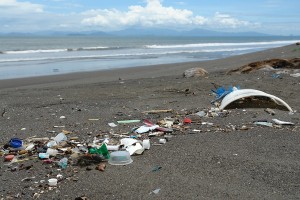What Were You Doing While the World Was Falling Apart?
 What were you doing while the world was falling apart?
What were you doing while the world was falling apart?
Imagine your great-grandchildren asking you that question. Can you be proud of your answer?
The “seventh generation” principle taught by Native Americans says that in every decision, we must consider how it will affect our descendents seven generations into the future. It is clearly not embraced by most governments and corporations in the world today.
It is also at the heart of the Idle No More movement of the Canadian First Nation People.
The Idle No More movement started in Canada in December 2012 as a response to Canadian Bill C-45 which lowers environmental protection standards for Canadian waterways, much of which passes through the land of indigenous [First Nations] people.
It’s important to remember that before our ancestors came to North America several centuries ago, this entire continent was indigenous land.
On December 4, representatives of the Canada First Nations went to the House of Commons to share their concern about the proposed bill and were blocked from entering.
A week later, after being repeatedly denied a meeting with Canadian Prime Minister Stephen Harper, Chief Theresa Spence, leader of the Attawapiskat People, started a hunger strike in order to bring attention to the issue. The bill passed, however, on December 14.
Chief Spence will continue her hunger strike until the Prime Minister and Governor General agree to meet with Canada’s Assembly of First Nations to renegotiate the conditions of the bill.
Support for the Idle No More movement has now spread across the U.S. and around the world. People everywhere are fed up with government and corporate greed’s disregard of environmental protection.
What’s happening closer to home?
Closer to my home, here in Michigan, the State leased mineral rights on state lands to oil and gas companies. That includes state forest, game areas and nature preserves.
The State of Michigan has also given energy companies carte blanche to start fracking operations on private land. This means that energy companies are leasing land from poor farmers for their fracking operations.
There was no vote on this; it was not presented to the people of Michigan first. It was a private deal between the State and the energy companies.
In a desperate economy, it’s hard to blame farmers for selling drilling rights that will give them temporary relief.
But, once again, who pays the price? And when? Are we doing all we can to protect the land and the animals and the future?
Opponents say fracking has a negative impact on water supplies, surrounding vegetation and wildlife. The best fracking supporters can say is, “it’s not that bad” and may ultimately lower utility prices.
I’m not going to try to answer those questions in this post. My intention is to remind us all of our responsibility to the earth and the future. We are the caretakers now.
What we can do
[quote]”I always wondered why somebody doesn’t do something about that. Then I realized I was somebody!” Lily Tomlin[/quote]The term “idle no more” means the First Nation peoples are no longer going to silently stand by while their lands are polluted. They are finding their voice and speaking up. We can do the same.
Take some time to educate yourself. Support causes you believe in. See my prior post on social activism for ways we can be heard. It’s actually pretty easy.
Progress versus preservation has always been a contest. It seems evident that we owe global warming to progress taking the lead thus far.
We live in an age where we simply must be intelligent and get all the facts before we blindly follow every leader. Yes, it may put a few dollars in our pockets today. But what is the price the seventh generation will be paying?
What were you doing while the world was falling apart? Can you answer that with a clear conscience?
If you enjoyed this post, I’d be thrilled if you’d click one of the buttons below.
Molly Larkin is the co-author of the international best-seller “The Wind Is My Mother; The Life and Teachings of a Native American Shaman” and other books on health. She is passionate about helping people live life to their fullest potential through her classes, healing practice and blog at www.MollyLarkin.com

